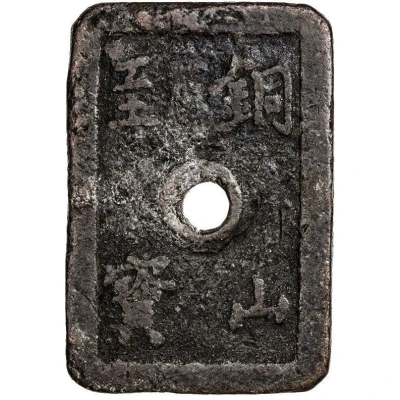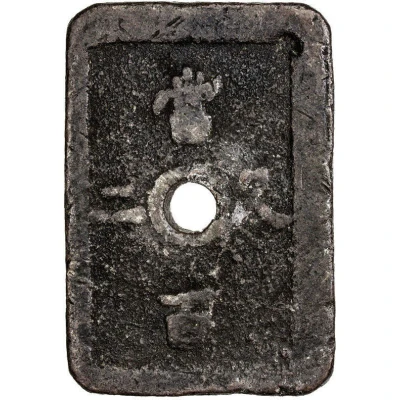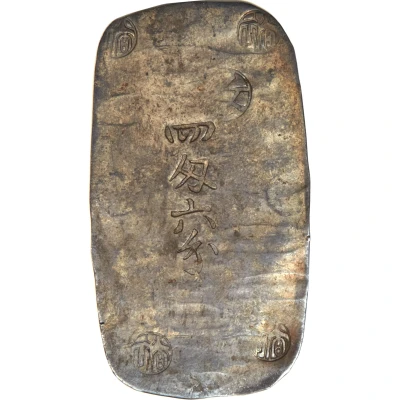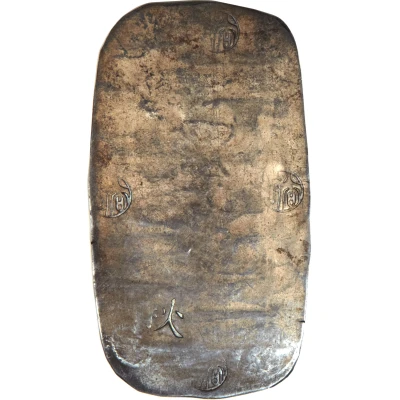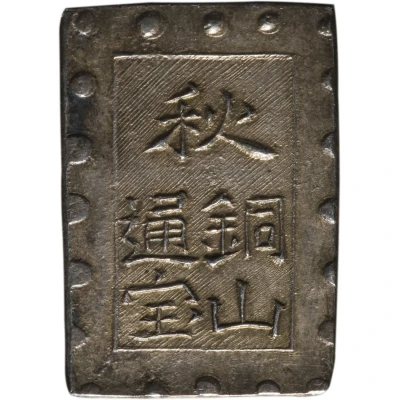
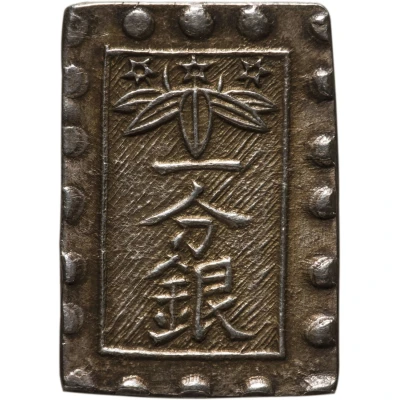

© Ginza Coins
1 Bu "Akita Sasa Ichibugin" ND
1868 year| Silver (.900) (10% Zinc) | 8.7 g | - |
| Issuer | Kubota Domain (Japanese feudal domains) |
|---|---|
| Type | Standard circulation coin |
| Year | 1868 |
| Value | 1 Bu (¼) |
| Currency | Ryō (1863-1864) |
| Composition | Silver (.900) (10% Zinc) |
| Weight | 8.7 g |
| Size | 22 × 15.8 mm |
| Shape | Rectangular (irregular) |
| Technique | Hammered |
| Orientation | Medal alignment ↑↑ |
| Demonetized | Yes |
| Updated | 2024-10-05 |
| Numista | N#16667 |
|---|---|
| Rarity index | 93% |
Reverse
Bamboo grass design (crest of the Satake family, daimyos of Akita) and three vertical characters (value) below, in rectangle surrounded by pearl border.
Lettering:
一
分
銀
Translation:
One
Bu
Silver
Comment
The coins were produced in final years of Edo period, but unknown actual date.Source for material composition: 'History of Akita Currency [秋田貨幣史] by Satō Seiichirō, p.114'
Interesting fact
One interesting fact about the "Akita Sasa Ichibugin" coin is that it was minted during the Meiji Restoration, a time of significant political and social change in Japan. The Meiji Restoration was a revolution that overthrew the Tokugawa shogunate, which had ruled Japan for over 250 years, and established a new government based on Western models. This coin was minted in the Kubota Domain, one of the Japanese feudal domains, and features an image of a pine tree on one side and the Japanese characters for "Akita Sasa Ichibugin" on the other. The coin was made of silver and zinc and weighs 8.7 grams. Despite its age, the coin remains a popular collector's item and a symbol of Japan's rich history and culture.
